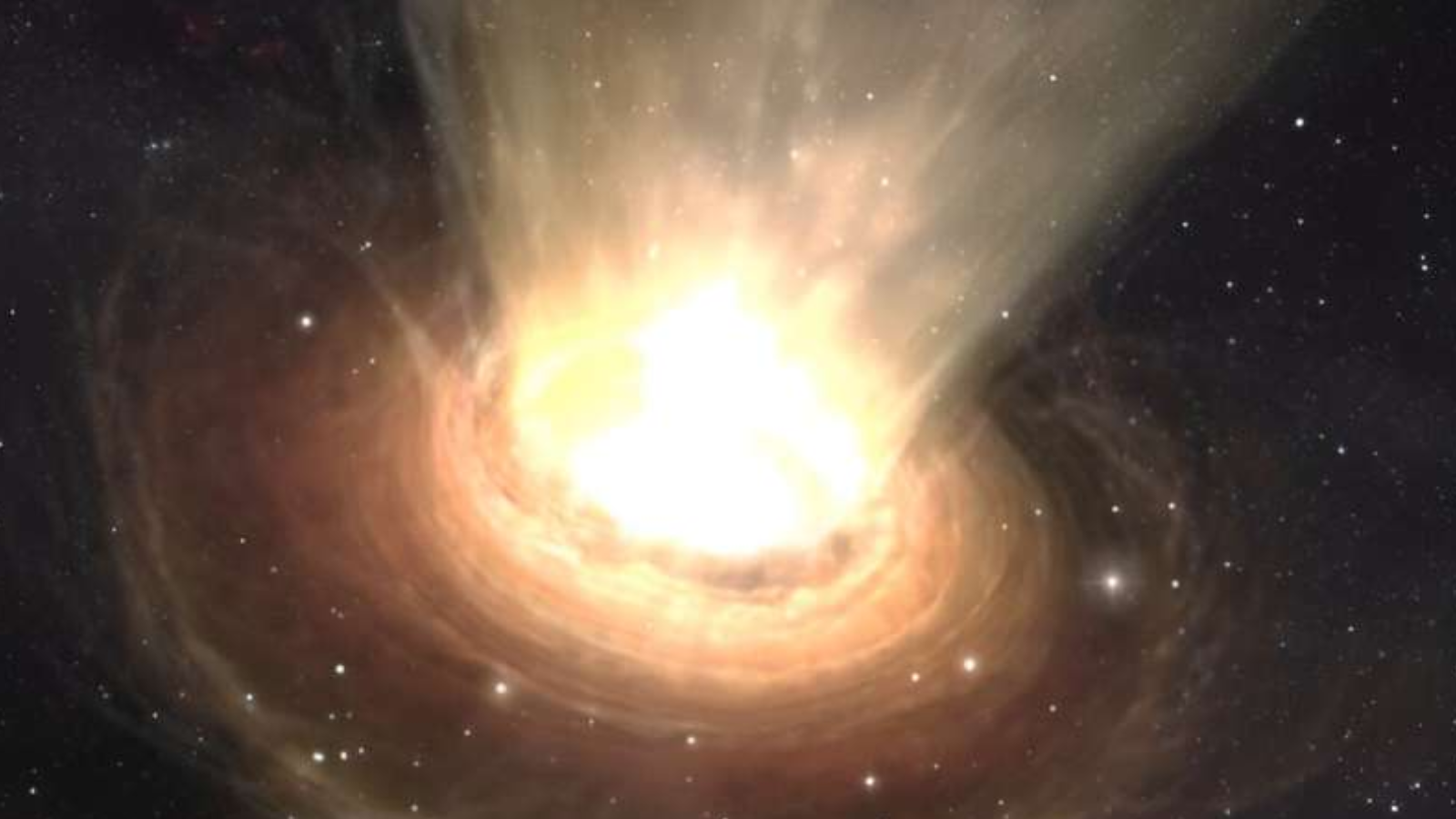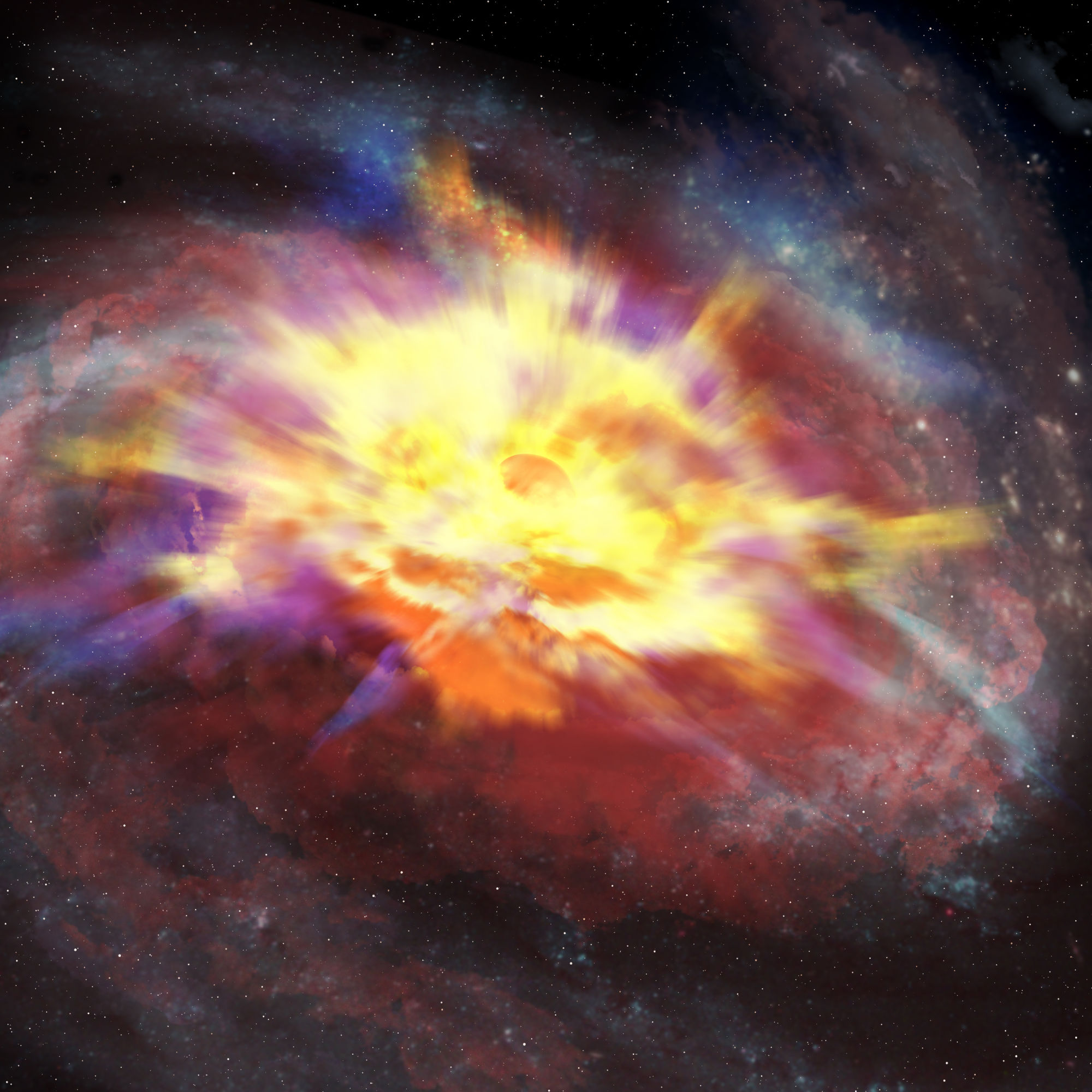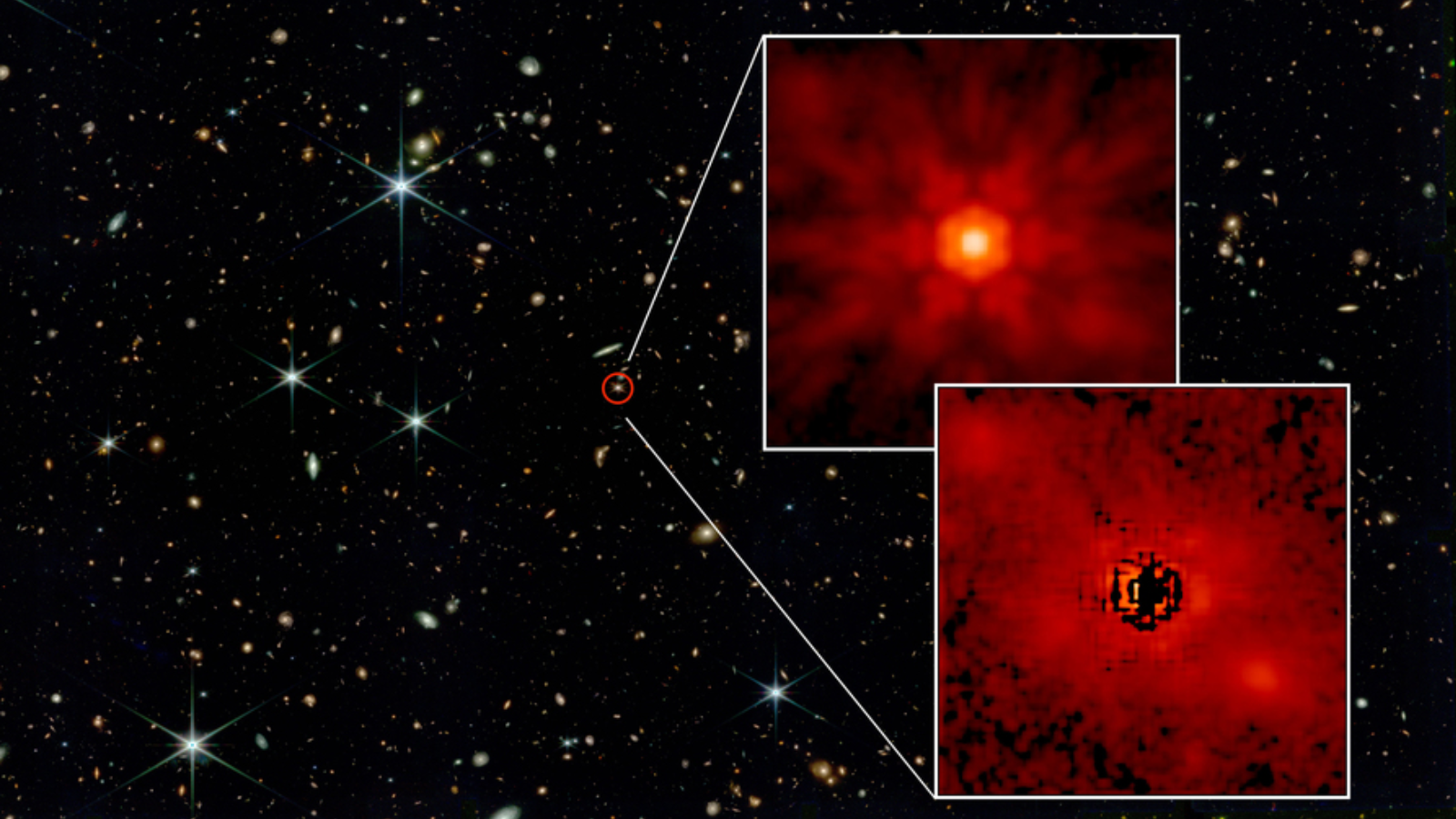
Using the James Webb Space Telescope (JWST), astronomers have spotted the earliest powerful "galaxy-size" wind blowing from a feeding supermassive black hole-powered quasar. The powerful wind is pushing gas and dust from its galaxy at incredible speeds, killing star birth in its host galaxy.
This quasar, designated J1007+2115, is so distant that it is seen as it was just 700 million years after the Big Bang — when the 13.8 billion-year-old universe was just around 5% of its current age. Though this makes J1007+2115 just the third-earliest quasar ever seen, it is the earliest ever observed with a powerful, galaxy-size wind flowing from it.
The outflows from this quasar aren't just remarkable for their antiquity, though. The winds from J1007+2115 stretch out from the black hole at their source for a staggering 7,500 light-years, which is equivalent to around 3,750 solar systems lined up side-by-side! The material they shunt each year is equivalent to 300 suns at speeds equivalent to 6,000 times the speed of sound, researchers said.
"It is the third-earliest and third-most-distant quasar powered by an accreting supermassive black hole known today," discovery team leader and University of Arizona researcher Weizhe Liu told Space.com. "To our knowledge, this galaxy-scale quasar-driven wind is currently the earliest one known."
Related: How black-hole-powered quasars killed off neighboring galaxies in the early universe
The winds from this feeding central supermassive black hole may even be powerful enough to "kill" the host galaxy they rip through at 6,000 times the speed of sound, by depriving it of the matter needed to birth new stars.
How supermassive black holes get wind
All large galaxies are believed to have at their hearts a supermassive black hole, sporting a mass between millions and billions of times that of the sun. But not all of these black holes power quasars, the brightest sources of light in the cosmos.
That's because some supermassive black holes aren't surrounded by vast amounts of gas and dust that they can feed on. For instance, the supermassive black hole at the heart of our own galaxy, Sagittarius A* (Sgr A*), is quiet and dim.
Other supermassive black holes are surrounded by a wealth of material swirling around them in a flattened cloud called an accretion disk that gradually feeds them. The immense gravitational influence of the central black hole causes powerful friction in accretion disks, heating this material and causing it to glow brightly.
These regions, called active galactic nuclei (AGNs) are so bright they can outshine the combined light of every star in the galaxy around them. When seen at great distances, these regions are called "quasars."
The powerful radiation emitted by accretion disks has another effect, too: It pushes away matter like gas and dust from around the AGN. These quasar winds can also push gas and dust away from the wider quasar-hosting galaxy.

With the aid of the JWST, the researchers were able to see that the material in the quasar winds from J1007+2115 is traveling at an incredible 4.7 million mph (7.6 million kph). As you might imagine, such powerful and far-reaching winds carry a vast amount of matter. Liu said that the quasar winds from J1007+2115 are carrying material with a mass equivalent to 300 suns each year.
The galaxy that houses J1007+2115 is rich in dense molecular gas and dust, the building blocks of stars, as seen by the JWST. The galaxy forms stars at a rate of around 80 to 250 solar masses every year. But the light from that galaxy has been traveling to us for 13.1 billion years, meaning it is likely quite different now. In particular, thanks to these quasar winds, starburst activity may not have continued for long.

The purging of gas and dust via these quasar winds will also cut off the food supply for the supermassive black hole driving them. This means that the growth of the supermassive black hole, with a mass estimated to be equal to that of 1 billion suns, may have also been halted.
"The wind is pushing a large amount of gas outwards," Liu said. "This may suppress the star formation activity of the galaxy, which needs gas to form stars, and also the growth of the supermassive black hole itself, which also needs the accretion of gas."
This could mean that this early galaxy is now a dead galaxy and isn't growing much as a result of its star-forming material being purged and its star birth being curtailed.
Related: Brightest quasar ever seen is powered by black hole that eats a 'sun a day'
The team isn't done with quasar winds and investigating their influence on their host galaxies. They will continue to hunt them and may even uncover more that existed less than a billion years after the Big Bang.
"We now aim to look for more such galaxy-scale, quasar-driven winds in the
very early universe and get to know their properties as a population," Liu concluded.
A pre-print version of the team's research is featured on the paper repository arXiv.
Editors note: The jet's length was updated from being equivalent to 25 solar systems in length to 3,750 solar systems in length







